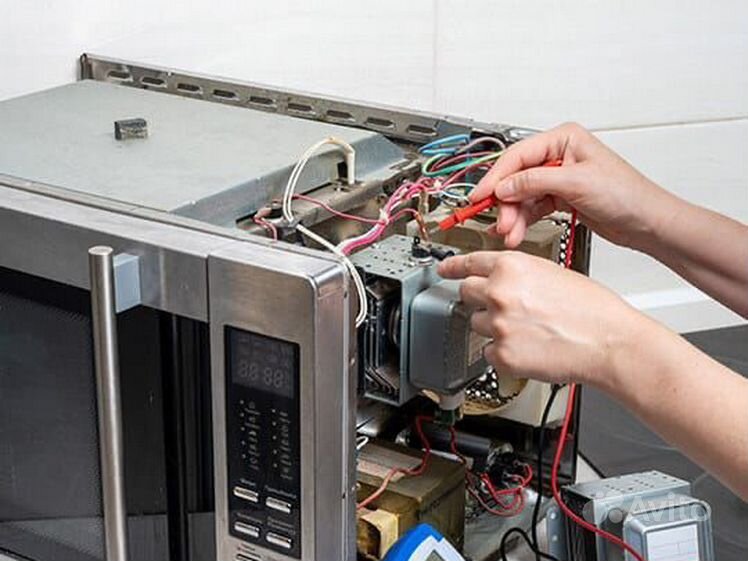High Voltage Direct Current Hvdc Transmission Systems Market Trends and Future Growth Estimates 2024 - 2032
The High Voltage Direct Current (HVDC) transmission systems market has witnessed significant growth over the past few years, driven by the increasing need for efficient and reliable power transmission across long distances. HVDC technology plays a critical role in modern power grids by facilitating the long-distance transmission of electricity with minimal losses. As countries look for ways to enhance the efficiency of their energy infrastructure, the demand for HVDC systems has surged. The global HVDC transmission systems market is set to expand as governments and utilities embrace this technology to support renewable energy integration and grid modernization. This article explores the drivers, applications, key players, and future outlook of the HVDC transmission systems market.
Key Drivers of the HVDC Transmission Systems Market
The HVDC transmission systems market is propelled by a variety of factors, including the growing demand for renewable energy, the need for grid interconnections, and advancements in HVDC technology. The ability to transmit electricity over long distances with minimal losses makes HVDC systems an essential part of the energy infrastructure of the future.
Rising Demand for Renewable Energy Integration
One of the most significant drivers of the HVDC transmission systems market is the increasing integration of renewable energy sources, such as wind and solar power, into the electricity grid. Renewable energy generation is often located far from consumption centers, and HVDC systems provide an efficient means of transmitting this power over long distances without significant losses. HVDC lines are especially well-suited for transmitting power from remote renewable energy farms (offshore wind farms, for example) to urban areas, making them crucial for the transition to a greener energy grid.
Growing Need for Grid Interconnections
As countries move toward a more interconnected energy system, HVDC transmission has emerged as a key technology for linking different grids. HVDC systems allow for the interconnection of power grids across regions or countries, facilitating the exchange of electricity between areas with varying supply and demand. This is particularly important for balancing supply during peak demand and for ensuring grid stability. HVDC links can also help in the integration of diverse energy sources, including renewable energy, into national grids, thus improving energy security and reliability.
Technological Advancements in HVDC
The development of Voltage Source Converter (VSC) HVDC technology and other innovations in power electronics has revolutionized the HVDC transmission systems market. VSC-HVDC, in particular, provides greater flexibility for connecting renewable energy sources, enhancing grid stability, and enabling the efficient integration of offshore and remote power stations. The advancements in semiconductor technology and control systems have made HVDC systems more reliable, cost-effective, and efficient, further driving their adoption across various regions.
Types of HVDC Transmission Systems
HVDC transmission systems can be classified into two main types: Line Commutated Converter (LCC) HVDC and Voltage Source Converter (VSC) HVDC. Both systems have distinct characteristics, advantages, and applications, depending on the specific requirements of the grid and the type of power being transmitted.
Line Commutated Converter (LCC) HVDC
LCC-HVDC is the traditional type of HVDC system, which has been in use for several decades. This technology uses a thyristor-based converter to convert AC (alternating current) to DC (direct current) for long-distance transmission. LCC systems are typically used in high-power, long-distance applications and are most suitable for large-scale grid interconnections. However, they are less flexible compared to VSC systems and require strong and stable AC grids at both ends.
Key Advantages of LCC-HVDC:
-
High efficiency for long-distance, bulk power transmission.
-
Mature technology with a proven track record.
-
Suitable for connecting large power grids and interconnecting countries.
Voltage Source Converter (VSC) HVDC
VSC-HVDC is a newer and more flexible technology that uses insulated-gate bipolar transistors (IGBTs) to convert AC to DC and vice versa. This system allows for easier integration of renewable energy sources, such as offshore wind farms, into the grid. VSC-HVDC provides greater control over power flow and can operate in weak grids or even without a strong AC connection. Additionally, VSC systems are more compact and can be used for both grid interconnections and point-to-point transmission.
Key Advantages of VSC-HVDC:
-
Greater flexibility and control over power flow.
-
Easier integration of renewable energy sources.
-
Ability to operate in weak grids and provide voltage support.
-
Lower environmental impact due to more compact design.
Applications of HVDC Transmission Systems
HVDC systems are widely used in a variety of applications across the energy sector. Their ability to transmit power efficiently over long distances and their compatibility with renewable energy sources make them essential for modern power networks.
Long-Distance Power Transmission
One of the most common uses of HVDC transmission systems is in long-distance power transmission, where they are used to transfer electricity over vast distances with minimal energy loss. In traditional AC transmission systems, power losses increase with distance due to the resistance of the wires. However, HVDC systems can transmit electricity over 1,000 kilometers or more with significantly lower losses. This makes them ideal for transmitting power from remote power plants or renewable energy sources to urban centers, industrial zones, or large power grids.
Offshore Wind Farm Integration
Offshore wind farms are often located far from coastal cities, making it difficult to connect them to the onshore grid using conventional AC transmission lines. HVDC transmission systems are increasingly used to integrate offshore wind energy into the grid, providing an efficient means of transferring electricity from offshore turbines to onshore grids. HVDC technology ensures minimal losses and better stability when connecting large-scale offshore wind farms to national or regional grids.
Grid Interconnections and Stability
HVDC transmission systems play a crucial role in connecting separate power grids, whether within a country or between neighboring countries. They are particularly useful for linking grids with different operating frequencies or asynchronous grids, allowing electricity to flow in both directions. HVDC also provides improved grid stability, offering enhanced control over power flow and voltage regulation, making it easier to balance supply and demand.
Integration of Renewable Energy
As renewable energy sources such as wind and solar power become more prevalent, HVDC systems are vital for integrating these intermittent energy sources into the grid. HVDC technology enables the efficient transmission of electricity from renewable energy generation sites, often located in remote or offshore areas, to areas with high demand. HVDC lines are also essential for transmitting electricity from large-scale solar power plants in deserts or remote areas, where traditional AC transmission would be less effective.
Regional Insights: Key Markets for HVDC Transmission Systems
The HVDC transmission systems market is growing rapidly across various regions, with significant demand from both developed and emerging markets. Some of the key regions driving the adoption of HVDC technology include North America, Europe, and Asia Pacific.
North America
North America, particularly the United States and Canada, is a major market for HVDC transmission systems. The region has a growing demand for energy infrastructure upgrades and is increasingly adopting HVDC technology to support renewable energy integration and long-distance power transmission. The development of offshore wind farms along the U.S. East Coast is expected to drive further adoption of HVDC systems in the region.
Europe
Europe is at the forefront of HVDC technology adoption, driven by the region's commitment to decarbonization and renewable energy integration. European countries, including Germany, the UK, and Norway, are investing heavily in HVDC projects to facilitate the integration of offshore wind energy and strengthen cross-border grid interconnections. The European Union’s Green Deal and its goal to achieve carbon neutrality by 2050 are expected to further accelerate the adoption of HVDC transmission systems.
Asia Pacific
Asia Pacific is the fastest-growing market for HVDC transmission systems, with countries like China, India, and Japan leading the charge. China, in particular, has been a pioneer in HVDC technology, having built the world’s longest and highest-capacity HVDC transmission lines. The rapid industrialization and urbanization of countries in the region, coupled with a growing demand for renewable energy, are expected to drive the adoption of HVDC systems across Asia Pacific.
Challenges in the HVDC Transmission Systems Market
Despite the growth and potential of HVDC transmission systems, there are several challenges that could hinder their widespread adoption.
High Initial Cost
One of the primary challenges associated with HVDC transmission systems is the high initial cost of installation. The infrastructure required for HVDC systems, including converters, transformers, and cables, is expensive compared to traditional AC systems. However, the long-term benefits of HVDC technology, such as lower energy losses and higher efficiency, often outweigh the initial costs.
Complexity of Implementation
HVDC systems are complex to design, install, and maintain. The technology requires highly specialized equipment and expertise, making implementation more challenging, especially in regions with limited technical knowledge or experience with HVDC.
Future Outlook for the HVDC Transmission Systems Market
The future of the HVDC transmission systems market looks promising, with continued growth expected as countries transition to cleaner and more efficient energy systems. The growing demand for renewable energy integration, grid interconnections, and energy security will drive further investments in HVDC infrastructure. Technological advancements in HVDC, such as the development of more efficient and cost-effective converter systems, will also contribute to the market's growth. As HVDC systems become more affordable and accessible, their adoption across both developed and emerging markets is expected to increase, leading to more interconnected and efficient power grids.
Conclusion
The HVDC transmission systems market is poised for significant growth as the demand for efficient and reliable power transmission systems increases globally. With the ability to support renewable energy integration, long-distance power transmission, and grid interconnections, HVDC systems are set to play a crucial role in the energy transition. Despite challenges such as high initial costs and implementation complexity, the technological advancements and long-term benefits of HVDC make it an attractive option for modernizing energy grids.
More Trending Reports
Geothermal Turbines Market Analysis
USA HVAC Motors Market Analysis
What's Your Reaction?
 Like
0
Like
0
 Dislike
0
Dislike
0
 Love
0
Love
0
 Funny
0
Funny
0
 Angry
0
Angry
0
 Sad
0
Sad
0
 Wow
0
Wow
0













































